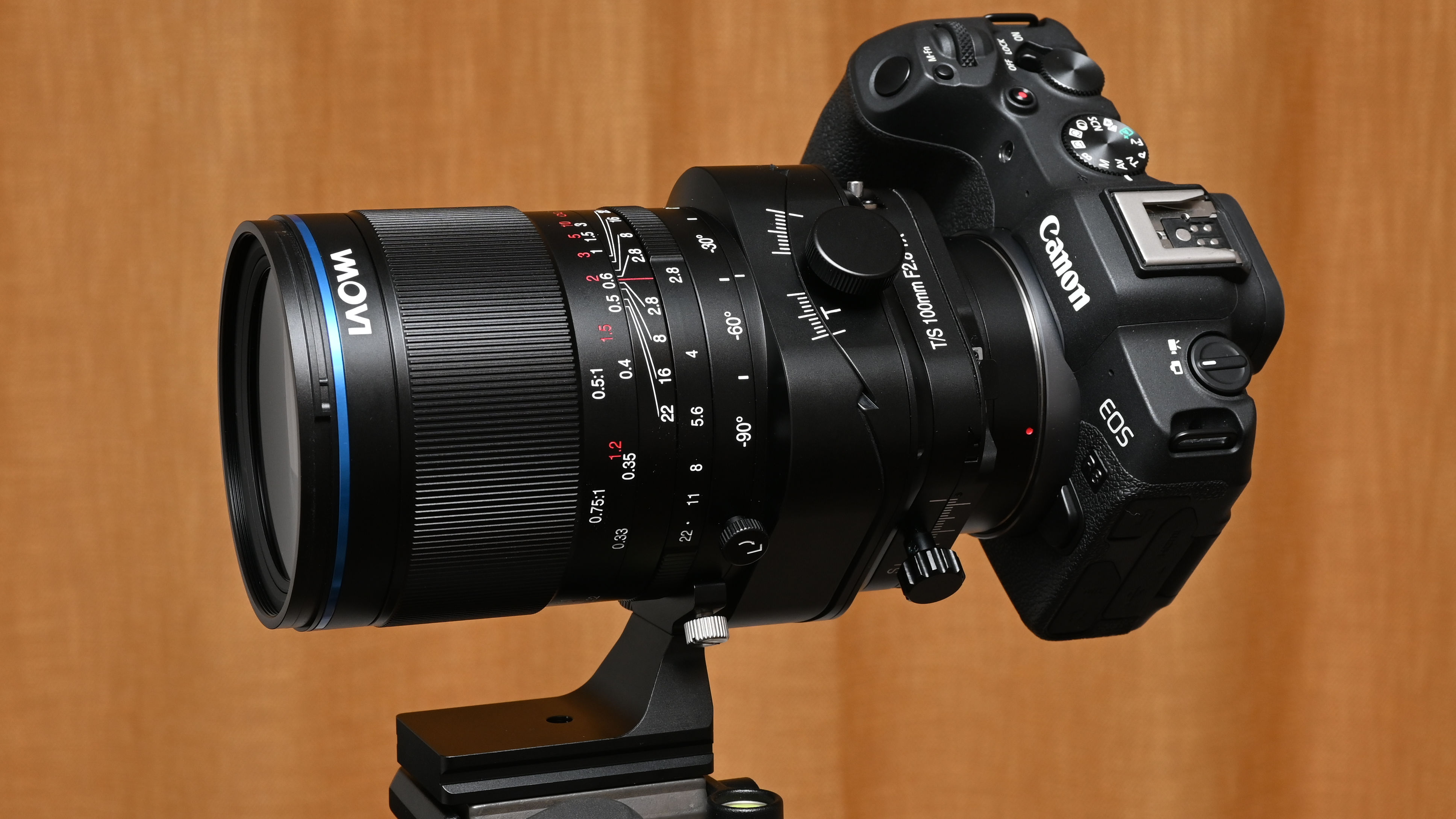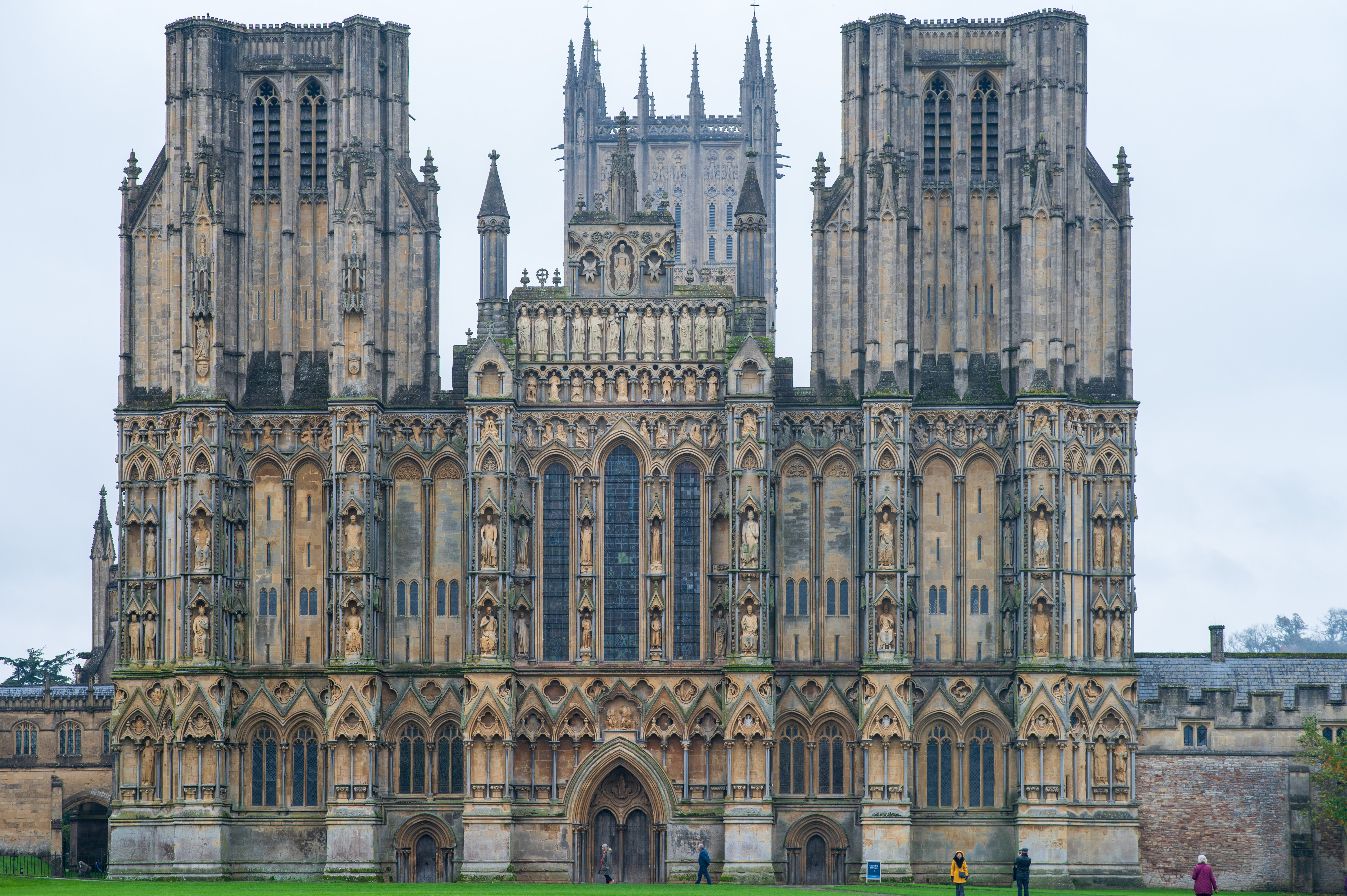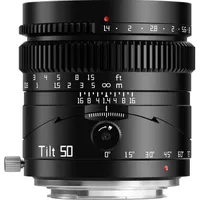Digital Camera World Verdict
I like that the Laowa FFII TS 100mm F2.8 Macro 1X goes beyond the brief of most Tilt and Shift lenses, adding full 1.0x macro potential. For extreme close-ups, still life and product photography, I’ll take any extra depth of field I can get my hands, and this cost-effective lens really delivers.
Pros
- +
Tilt, shift and full macro
- +
Sharp image quality
- +
Wide-ranging mirrorless mount options
Cons
- -
Typically fiddly to use
- -
Fully manual, no electronics
- -
No DSLR mount options
Why you can trust Digital Camera World
Think ‘Tilt and Shift’ or ‘Perspective Control’ lenses and you’re probably thinking of architectural photography. The Shift function can effectively correct perspective, so that the walls of tall buildings don’t appear to lean inwards towards the top. Meanwhile, the Tilt function literally tilts the axis of the lens relative to the camera’s image sensor, giving anything from a really tight depth of field for a ‘toy camera’ effect, to a much larger depth of field for keeping relatively near and far objects sharp within an overall scene. This Laowa lens for mirrorless full-frame and medium format cameras has a 100mm focal length, which is too long for typical architectural photography. For this, the simultaneously announced Laowa FFII TS 55mm F2.8 Macro 1X is a somewhat better fit, more so the previously launched Laowa FF S 20mm F4.0 Zero-D Shift, which has an ultra-wide viewing angle but only a shift function with no tilt facility. However, the 100mm lens’s focal length and 1.0x maximum magnification make it ideal for macro photography, where the tilt function gives a boost to the typically tiny depth of field. All in all, the lens aims for a spot in the best tilt-shift lenses hall of fame.
Laowa FFII TS 100mm F2.8 Macro 1X: Specifications
| Mount options | E, RF, Z, L, G, XCD |
| Lens construction | 13 elements in 10 groups |
| Angle of view | 37 degrees |
| Diaphragm blades | 15 |
| Minimum aperture | f/22 |
| Minimum focus distance | 0.32m |
| Maximum magnification | 1.0x |
| Filter size | 67mm |
| Dimensions | 85x162mm |
| Weight | 1215g |
Laowa FFII TS 100mm F2.8 Macro 1X: Price
The Laowa FFII TS 100mm F2.8 Macro 1X is available in various mount options for mirrorless full-frame cameras, including Canon RF, Nikon Z, Sony E and L-mount. It’s also suitable for medium format cameras, with Fujifilm G and Hasselblad XCD mount versions on the list. Let’s cut to the chase. The lens costs around $1250/£1000. Sure, it’s not cheap for a fully manual lens with no electronics, but that helps to boost the range of mount options, and it’s massively more affordable than typical own-brand examples of the genre. For example, the full-frame Canon TS-E 90mm f/2.8L Macro costs around $2,199/£2,439, and the Nikon PC-E Micro-NIKKOR 85mm f/2.8D costs about $1,977/£1,799. In the medium format camp, the GF 110mm F5.6 T/S Macro costs a whopping $3,499/£3,499, making the Laowa look like a bargain at the price, especially if pro-grade tilt and shift photography isn’t your staple diet.
Laowa FFII TS 100mm F2.8 Macro 1X: Design & Handling
A big and chunky lens, the Laowa measures 85x162mm and weighs in at 1215g (2.7lbs). As such, it’s supplied complete with a tripod mounting ring that has an Arca-Swiss compatible foot. That’s all but essential, given the lens’s requirement for tripod support in macro shooting, but that’s not all. Laowa actually calls the mounting ring a ‘Shift holder’, as it also keeps the lens fixed in place when using the Shift function, so only the camera body is moved. That’s ideal in ‘shift’ shooting. In time-honored tradition, the Shift mechanism has a marked scale and features a locking knob on one side and an adjustment knob on the other. In this case, it enables a generous +/-12mm of shift movement, either side of the zero position.
Like with other Tilt and Shift, there’s no autofocus so focusing is a purely manual affair. The magnified preview option of mirrorless cameras enables you to nail focusing, even in critical scenarios like macro shooting. The focus ring has a long throw and operates with smooth precision, which is a big help. However, unlike recent own-brand lenses of this type from camera manufacturers, there’s no CPU or any electronics. Downsides include the lack of any lens-based EXIF data being stored in images. The camera doesn’t even ‘know’ that a lens is attached so with Canon EOS R system bodies, for example, you need to enable the option for shooting with no lens attached in the camera’s menu system.
It bears repeating that the shift function is arguably not this lens’s strong suit, the 100mm focal length being too long for most architectural photography scenarios. The tilt function is a bigger hit, delivering control over depth of field at any given focus distance and aperture setting. The ‘toy camera effect’ with minimized depth of field can be a fun element but extending the typically miniscule depth of field for really close-up shooting is a more major benefit. Again, there’s a locking knob on one side and a control knob on the other for making adjustments, with a respectable range of +/-10 degrees of tilt available.
Some Tilt and Shift lenses have a fixed rotation, early Nikon ‘Perspective Correction’ examples spring to mind. The upshot is that the shift function is only available for landscape orientation shooting and tilt is only available for portrait orientation, or visa versa. In some cases, a service center job would be required if you wanted to swap the orientations. As with most modern Tilt and Shift lenses, the Laowa enables you to rotate the main barrel of the lens on its mount. There’s a locking knob for applying a basic 90-degree rotation, as well as a secondary knob which enables 180-degree rotation in 15-degree click steps. That makes both tilt and shift functions available at any orientation.
It’s perhaps unfair to refer to the Laowa as a ‘dumb lens’, because it’s really very sophisticated. Even so, the term that’s often applied to lenses that lack any CPU or electronics holds true. The metal mounting plate is in keeping with the sturdy metal construction of the lens barrel but, as you’ll see in the image below, it’s bereft of any electronic contacts.
The best camera deals, reviews, product advice, and unmissable photography news, direct to your inbox!
Laowa FFII TS 100mm F2.8 Macro 1X: Performance
The optical path is based on 13 elements arranged in 10 groups, and features two ED (Extra-low Dispersion) elements and one HRI (High Refractive Index) element. The overall aim is to optimize sharpness, clarity and contrast while keeping unwanted aberrations to a minimum. I tested the lens on a Canon EOS R8 full-frame camera and found that levels of sharpness were both impressive and fairly consistent right out to the extreme edges and corners of the image frame. However, I can’t vouch for extreme edge-sharpness with medium format Fujifilm and Hasselblad cameras that naturally have much larger image sensors.
Typical of 100mm macro lenses with full 1.0x magnification, the Laowa has a minimum focus distance of about 0.3m or 1’ (0.32m to be exact), as measured from the camera body’s image sensor rather than from the front of the lens. The resulting depth of field at f/11 is only about 5mm or 0.2 inches at best. The tilt function can increase this but it can’t work miracles. The following two example images aren’t full macro shots, but are still extreme close-ups of a pair of small toy soldiers, one a little further away than the other. Focusing on the closer soldier, the shots show the extension in depth of field that you gain with full tilt, compared with zero tilt.
In other image quality news, the Laowa does very well to suppress color fringing, even out at the edges and corners of the frame. It’s not a zero-distortion lens but there’s only very slight pincushion which is generally impossible to spot in real-world shooting, as demonstrated in the following test image of color pencils, as well as in the earlier example shot of Wells cathedral in the UK.
Laowa FFII TS 100mm F2.8 Macro 1X: Lab Results
We run a range of lab tests under controlled conditions, using the Imatest Master testing suite. Photos of test charts are taken across the range of apertures and zooms (where available), then analyzed for sharpness, distortion and chromatic aberrations.
We use Imatest SFR (spatial frequency response) charts and analysis software to plot lens resolution at the center of the image frame, corners and mid-point distances, across the range of aperture settings and, with zoom lenses, at four different focal lengths. The tests also measure distortion and color fringing (chromatic aberration).
Sharpness:
Testing the lens with a full-frame camera, we found that levels of sharpness are excellent in the central region of the image frame and hold up very well towards the extreme edges and corners. Importantly for a ‘macro’ lens, good sharpness is also retained at narrow apertures, typically preferred to extend depth of field in extreme close-up shooting.
Fringing:
Color fringing is consistently minimal across the image frame, and at all apertures.
Distortion: 0.3
Technically, there’s a hint of pincushion distortion revealed in our lab tests but it’s generally unnoticeable in real-world shooting, even when taking shots of buildings and other subjects with very straight edges.
Laowa FFII TS 100mm F2.8 Macro 1X: Verdict
I quickly grew very fond of the Laowa FFII TS 100mm F2.8 Macro 1X. I’ve long been of the opinion that Tilt and Shift lenses literally give a new perspective to photography, that’s difficult or impossible to duplicate when editing shots taken with a conventional lens. The 100mm focal length is a good choice for macro photography and for still life, which the Laowa takes in its stride. The tilt function gives excellent control over depth of field and often avoids the need for ‘focus stacking’, which can be a lengthy chore at both the shooting and editing stages. Image quality is highly impressive, build quality follows suit, making this Laowa lens great value at the price.
| Features | It’s a full-featured Tilt and Shift 1.0x macro lens, although it lacks any electronics. | ★★★★ |
| Design | The ‘full manual’ design isn’t really a setback for tilt and shift shooting and the overall design is excellent. | ★★★★★ |
| Performance | Image quality is nice and sharp with excellent clarity, and the tilt and shift mechanisms add an extra dimension. | ★★★★★ |
| Value | Compared with own-brand Tilt and Shift lenses from camera manufacturers, it’s an absolute bargain. | ★★★★★ |
Should you buy the Laowa FFII TS 100mm F2.8 Macro 1X?
✅ Buy this...
- You want a Tilt and Shift lens with full 1.0x macro magnification for extreme close-ups or still life and product photography.
- You need a Tilt and Shift lens that’s available to fit a wide selection of full-frame and medium format mirrorless camera systems.
🚫 Don't buy this...
- You’d rather have a shorter focal length for your Tilt and Shift lens, more suitable for architectural and landscape photography.
- You’re put off by the lack of any in-lens electronics, to enable data communication with the camera and recording of lens-based EXIF data.
Alternatives
The Laowa FF S 20mm F4.0 Zero-D Shift is an ultra-wide-angle lens for full-frame and medium format cameras, available in an even wider range of mount options for DSLRs and mirrorless bodies. Canon EF and RF, Fujifilm G, Leica L, Nikon F and Z, plus Sony E versions are up for grabs, at $1099/£1179. As a shift-only lens, it’s most ideal for architectural photography.
The TTArtisan Tilt 50mm F1.4 offers only a tilt function for control over depth of field, so there’s no shift facility. Even so, it has a fast f/1.4 aperture rating and delivers good image quality. It’s available in Canon RF, Nikon Z, Leica L mount options, as well as Fujifilm X and Micro Four Thirds for crop-sensor cameras, at the crazy knockdown price of $199/£249.
Matthew Richards is a photographer and journalist who has spent years using and reviewing all manner of photo gear. He is Digital Camera World's principal lens reviewer – and has tested more primes and zooms than most people have had hot dinners!
His expertise with equipment doesn’t end there, though. He is also an encyclopedia when it comes to all manner of cameras, camera holsters and bags, flashguns, tripods and heads, printers, papers and inks, and just about anything imaging-related.
In an earlier life he was a broadcast engineer at the BBC, as well as a former editor of PC Guide.



















